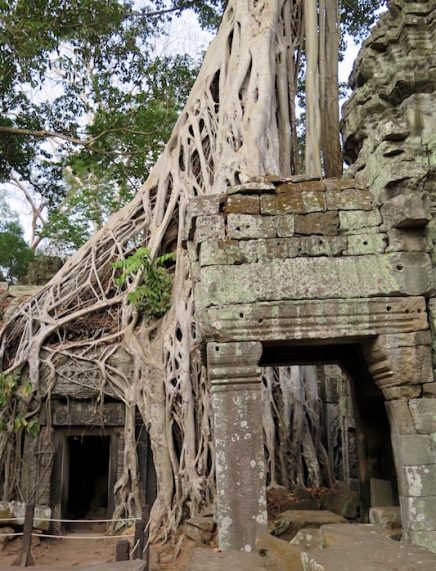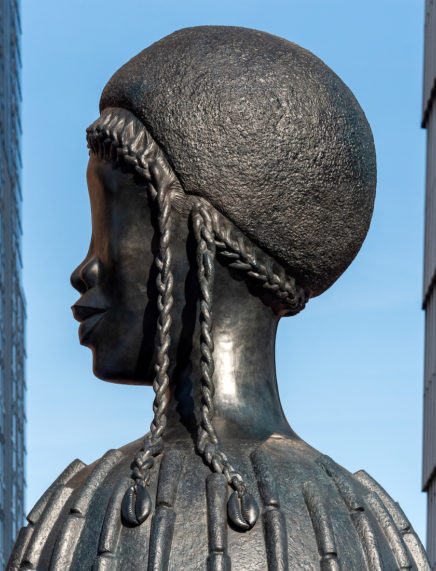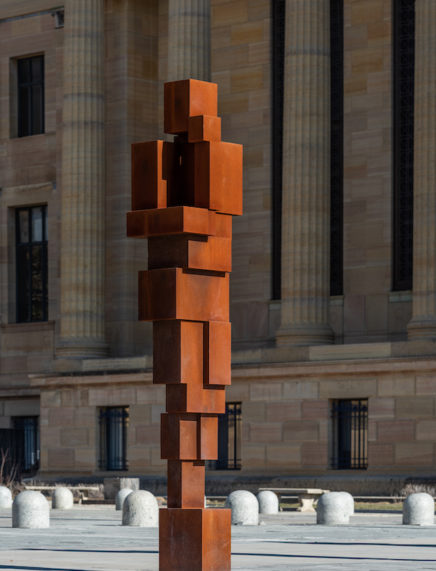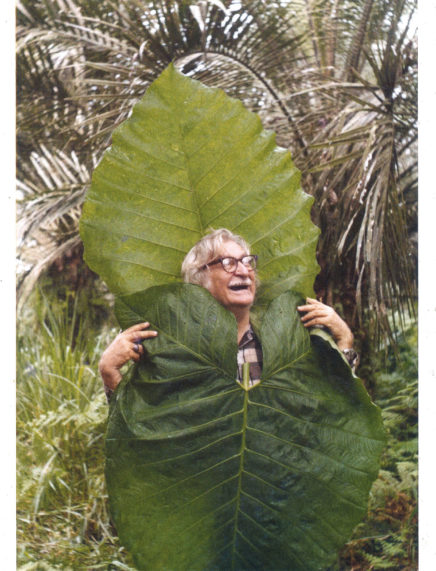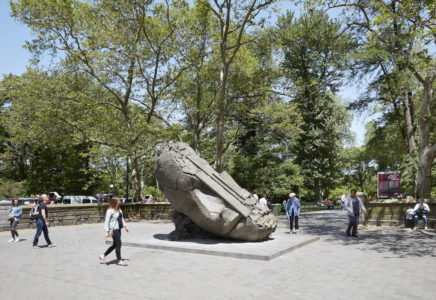Arte Sella, Città delle idee. Interview with Filmmaker Luca Bergamaschi
Arte Sella sculpture park was created in the Spring of 1986 as a civil response to the Chernobyl disaster: as we suddenly became aware of the our environment’s vulnerability, the idea was to invite artists to intervene in this forest of Borgo Valsugana, in the northeastern Italian province of Trento, and to show how humans and nature could coexist while respecting each other. In thirty years, more than three hundred works of art created with natural materials – wood, rocks, soil – were installed at Arte Sella. Even though most of them have gradually been destroyed by time and exposure to the elements, or removed for safety reasons, new installations are being added each year. Katia Bernardi’s and Luca Bergamaschi’s new documentary allows us to discover this “Città delle idee”, as its co-founder and artistic director Emanuele Montibeller calls it. We met with film director Luca Bergamaschi at the parc de Bercy in Paris to find out more about this film which won the Touring Club Italiano Award at the 2016 Trento Film Festival last month.
Mathilde Simian: Can you explain the genesis of this documentary?
Luca Bergamaschi: The idea came from Katia Bernardi who, until recently, lived very close to Arte Sella. Two years ago, she started filming the site, without really knowing how she would use the images. We had already worked together on several occasions and she therefore suggested we brainstorm about it together. She brought me to this incredible place, and together we wondered how to approach such a gigantic space. A few years ago, Arte Sella was already at the center of a documentary which mainly focused on the Art&Nature movement and included a lot of artists’ and critics’ interviews… We wanted to do something on the outside and to follow artists through the challenges they encounter when installing a work of art.
MS: What is fascinating is that the two artists you present in your film, Luc Schuiten and Rainer Gross, are very different: in their artistic process, their approach of nature, their discourse, and the work they are installing. Even physically! Was it a deliberate choice?
LB: Yes, we did choose them for their differences. We could also have chosen an American artist, Anthony Howe, who was also present that year, but it was the first time he worked with natural materials. Gross and Schuiten, however, had already worked at Arte Sella. Yes, they are two very different artists: one draws, the other builds. Gross is very concrete and engaged in the making of his work. He likes sculpture, he is not into words. At the beginning of his career, he sold materials and therefore knows them very well. Schuiten is the exact opposite, he talks a lot! He’s an architect, an intellectual. He is also the brother of the great illustrator [François Schuiten, ndlr].
MS: There is another opposition in your film, which you mentioned earlier and which involves the artistic director who initiated this utopia and the assistant director who turns the ideas of artists into reality. This double contrast between these two artists and these two individuals who are essential to the life of Arte Sella highlights, as by a mirror effect, the duality which is so specific to this place. And this leads me to the title of your film which, at first, confused me a bit, I have to admit, because to me, Arte Sella was first and foremost a place of feelings and emotions in front of nature and the art work. Everything but ideas. And everything but a city. Can you tell us about this choice?
LB: It is complicated to find a title! In this case, it is a quote from the film from Emanuele Montibeller. We liked it a lot. Rather than meaning “post-industrial” city, the word “città” was for us synonymous with a network of people who create bonds, who build together. And as for “idea”, it is a magnificent word! For me, the city of ideas implies a process, an inception, a creation.
MS: Arte Sella celebrates this year its thirtieth anniversary. Orginally, it was a response to Chernobyl, wasn’t it?
LB: Yes, definitely. They wondered: as citizens, what can we do? Then Emanuele imagined a space in these woods where people came to pick mushroom and walk their dogs. Actually, he really had to fight to raise awareness, among the 5,000 inhabitants of the small town below Arte Sella, of the importance of these international artists’ work. But his standpoint is very clear: as he explains at the end of the film, he is hopeful that one day nothing will stand here and that humans will have made peace with nature. But he doesn’t believe in it much…
MS: And precisely, while you have made this film on the year of COP21, one realizes, when watching it, that nothing really changed in 30 years, and if it did, it’s probably for the worst. Do you believe a place like Arte Sella can change things, make a difference?
I do not believe politics can change anything. If the environment is currently a popular topic, if there is an increased awareness, it is thanks to the civil society. Today, Arte Sella attracts visitors. But the place remains, deliberately, a world apart: despite numerous requests, there are no weddings in the Cathedral which appears in the film! The idea is to keep the site for what it is, and by doing so, to protect it from mass tourism while attracting another kind of tourism. And there will be a raised interest for it. The press is interested: Le Figaro published a long article on Arte Sella last winter. The site is also well known in the art world, but it needs to open up to other audiences, through education. Incidentally, Arte Sella constantly hosts school groups and offers an awareness program on art and nature for children. That’s where it all starts.
MS: In this documentary, you show a year at Arte Sella and more specifically the precise moment of the installation of two artworks. You deliberately chose not to mention the awareness mission, the three hundred art pieces which were created there, artists or events. Explain this choice of the “right before“? Did this moment better illustrate what Arte Sella is to you?
LB: We liked this approach because we thought a more exhaustive presentation would weigh down on the place, would impose a discourse to it, weigh down on the players and make them say what we wanted to hear – a documentary with a thesis, basically. We were interested in being in this place, in trying to make it speak through its actors, rather than to present a very broad discourse of which Arte Sella would have been a mere illustration. Therefore, we did not seek to be representative. To me, this documentary is meant to say: “Go there, look!” And then it’s the visitor’s prerogative to develop his/her own opinion about it while visiting. I would rather make people feel the wood than to talk about ephemereal materials… I am a bit tired of large discourses. I don’t know how to deliver them. By writing this documentary, I wanted to tell a short story which can somewhat be part of a bigger one.
MS: Can you tell how long it took to shoot the film?
LB: It took a total of two years to shoot the film. Two years to get the images. And then the filming with the artists who were only present for two weeks each. Then came the Israeli choreographer, Itamar Seruddi Sahar, who brings something else, who allows a progression. He is a genius. An amazing encounter for me. It was his first work outside of a theater, in such an open space. This made him somewhat uncomfortable. He said there were too many choices…
MS: … same problematic as yours, basically?
LB: Exactly, too much space, and the question of how to represent it, how to use it. So we held on to the minuscule, to ants…
MS: I believe you used drones to shoot Arte Sella. How was that an asset?
LB: Yes, we used many drones. I am thankful we live in the era of drones! They allow movement – to enter the work, to come out of it, to circle it –, they offer a view point which is never that of a person, and it becomes magical. It therefore creates for the visitor an experience which wouldn’t be achieved otherwise, and I think it is a very poetic approach, very emotional, which pairs very well with the exceptional music of Ezio Bosso, a great Italian composer and a friend of Emanuele Montibeller. He gave us permission to use some his compositions for the film.
MS: At the end of the film, Emanuele Montibeller says “Nature is the true work of art”: you seem to agree with this idea because you film it a lot, more so than the works of art, actually.
LB: Yes, entirely true. At Arte Sella, nature is much more important than the works which are displayed there. Then again, these scupltures allow to highlight nature. Rainer Gross told me he liked using materials from the living, integrating his sculptures to nature because of what they could bring to it: his gigantic triangles among trees highlight them, they direct the gaze upward, thus allowing to look at nature from a different angle, to see it differently. Yes, we wanted to understand and capture the unfolding of seasons, the different natural elements, the wind, the rain. That’s the true work of art.
Arte Sella, La Città Delle Idee. A film by Katia Bernardi and Luca Bergamaschi (50’, Italy, 2016)
The documentary will be screened at Arte Sella on Saturday August 13, at 8:30pm.
Arte Sella
Corso Ausugum 55,
Borgo Valsugana
TN – Italy
A large part of Arte Sella is open to the public year round, free of charge. Some sections, Malga Costa (Costa Barn) and the Tree Cathedral, are open on certain dates (see calendar below) or for special events, with an admission ticket.
March – May: daily from 10am to 6pm
June – October: daily from 10am to 7pm
November – February: daily from 10am to 5pm
For additional information: artesella.it
